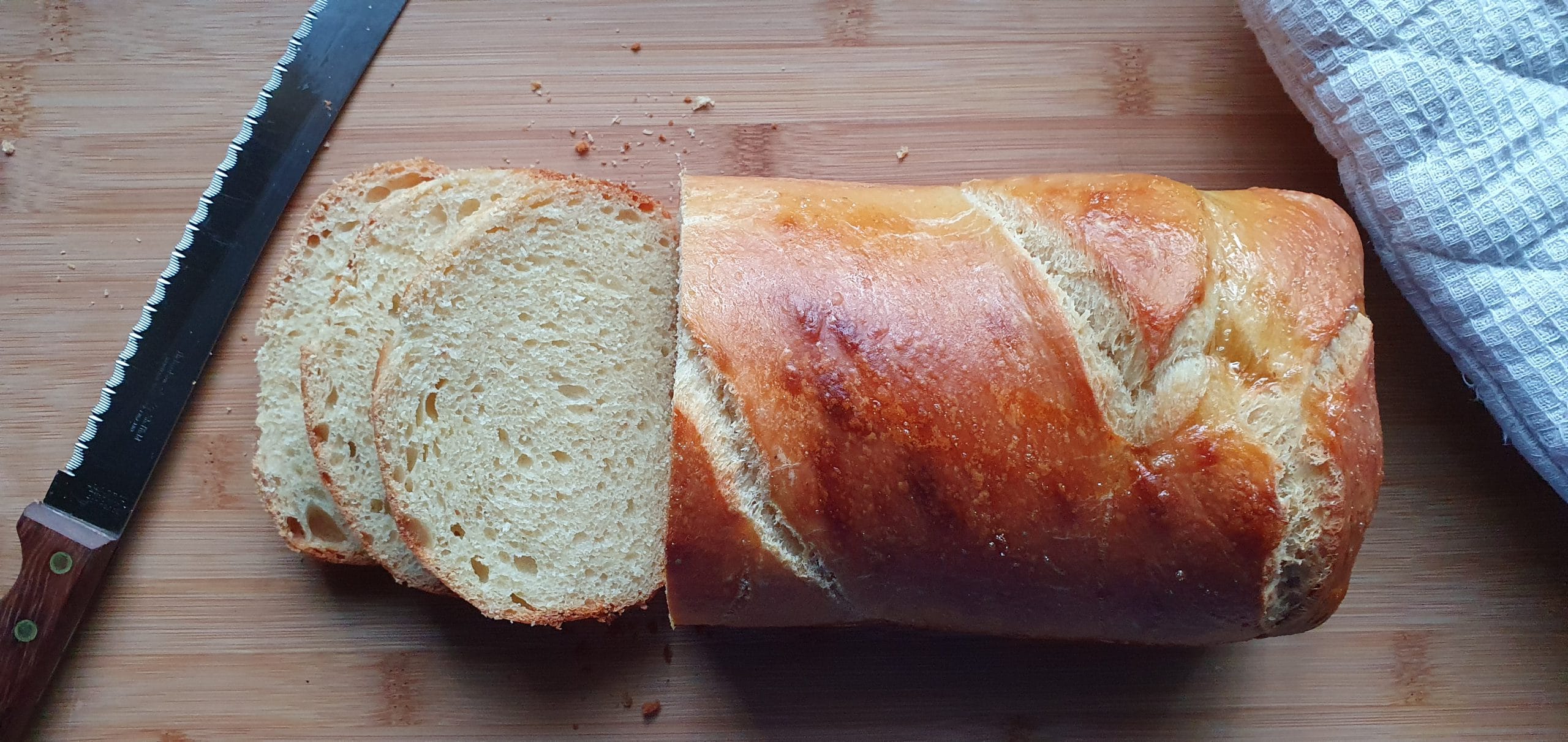Tons of Parmesan in the freezer for me to clear out. Best place to get ideas for good bread recipes is of course King Arthur Flour, and this Crescia al Formaggio came up quite highly rated.
This was a rather low-touch bread which didn’t need much work, but required quite some patience due to its long resting time. The recipe is chock full of parmesan, with a bit of white pepper for some heat.
The dough was super sticky, but surprisingly wasn’t too tricky to shape. It also did barely any rising despite the long rest times – 2 hours before shaping and another 2 hours after – only really bulking up when in the oven. The smell of the loaf as it was baking was incredible, filling the kitchen and the house all the way upstairs where Rudy was working.
The end result was a soft, crumbly loaf with incredible flavor, good enough on its own, and best when eaten warm. These make delicious grilled cheese sandwiches too. Try this recipe out when you have more time on your hands and have no plans to go out, it’s well worth the wait!
Crescia al Formaggio
Ingredients
- 3 large eggs
- 1 large egg yolk, white reserved
- 40 ml water, plus 2 teaspoons for glazing
- 60 grams unsalted butter, softened
- 300 grams plain or all-purpose flour (11% to 12% protein)
- 1 teaspoon salt
- 1 teaspoon ground white pepper
- 1 1/4 teaspoons instant yeast
- 170 grams grated Parmesan
Directions
In your breadmaker pan, add the eggs, egg yolk, 40 ml water, and butter.

Add the flour, salt, white pepper and yeast.

Transfer the pan to your machine, and start the Dough program.

About 10 minutes into the kneading cycle, add the Parmesan.

When the Dough cycle has finished, gently deflate the dough, turn it over, and return it to the pan. Let rest for another hour. At this point, the dough won’t show much rising.

Transfer to a lightly floured or oiled surface.

Divide the dough into 3 pieces.

Roll each piece of dough into 12-inch logs.

Place one log horizontal on your work surface, and form an ‘X’ on top of it with the remaining two logs.

Braid the logs, starting from the middle and working your way to one end. Repeat with the other end.

Nestle the braided dough into a greased 9- by 5-inch loaf pan.

Let rest, until the dough becomes noticeably puffy, 2 hours. You won’t see much rising still.

Place the oven rack slightly below the middle rung of the oven. Preheat the oven to 220 degrees C (fan 200 degrees C).

Whisk the reserved egg white with the remaining 2 teaspoons of water.

Brush the top of the loaf with the egg white glaze.

Transfer the loaf to the oven and bake, 15 minutes. The bread will start to puff up.
Reduce the temperature to 180 degrees C (fan 160 degrees C), tent the loaf lightly with aluminium foil, and bake for another 30 minutes, until golden brown and an instant-read thermometer inserted into the center registers 88 degrees C.

Remove the loaf from the oven and let cool in the pan for 5 minutes.

Transfer to a wire rack to cool, before slicing.




Leave a Reply